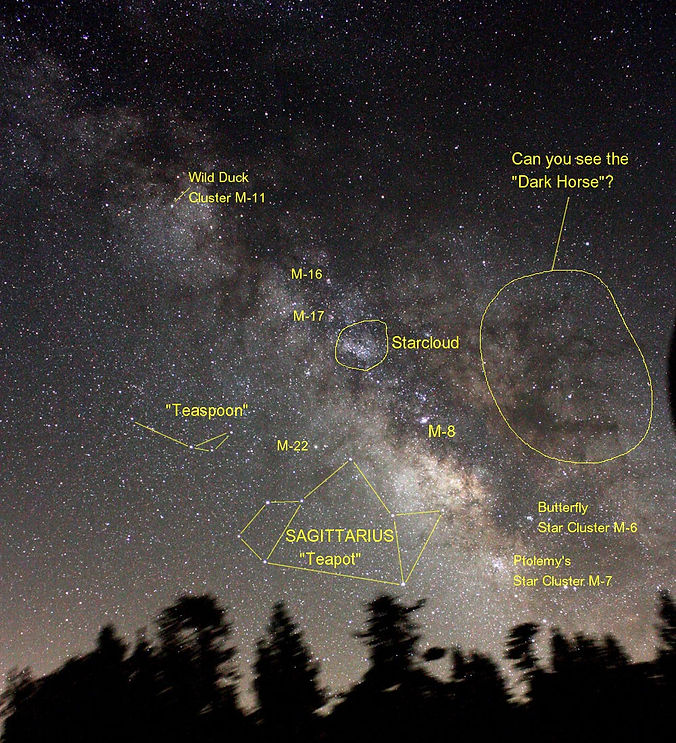
Observer's Corner for July
Birth of the Stars!
By Professor Hal Jandorf
As our Galaxy, the Milky Way, rises higher in Mid-summer, it reveals dozens of hydrogen clouds. These are called EMISSION NEBULAE which are the birth place of stars.
These nebulae glow and fluoresce as gravity heats up the compressed cloud and strips electrons from the atoms. The hot clouds are ionized and refered to as HII regions.
In the 1700’s, astronomer Charles Messier located many emission nebulae with his small telescope from dark skies of Paris. Three popular emission nebulae are in the Sagittarius: M-8, M-20 AND M-17.
Now, the emission nebulae have earthly names that conserve the shapes that Messier found 250 years ago. Some of them are involved with young stars (Open Clusters) forming in these regions.
The names: Lagoon, Trifid, Swan are show pieces in our summer night sky!
Note: The visual image shows shades of gray and less detail compared to the full color astrophotography image. Taken with a 120mm Diameter, 900 mm FL APO Refractor

M-8 Lagoon Nebula in Sagittarius R.A. 18h 04 m Dec -24 The Lagoon Nebula can be located just above the “spout” 0f the “Teapot” of Sagittarius (see photo) 5000 LY distant.
M-20 Trifid Nebula in Sagittarius R.A. 18h 03 m Dec -23 The shows three lobes of gas separate by dark lanes. The blue color is reflection from young, hot stars. 5000 LY distant
M-17 Swan Nebula in Sagittarius R.A. 18h 21m Dec -16 Sometimes called the horseshoe or Greek Omega letter. Bright and spectacular in a dark sky! 5000 LY distant.
If you enjoy “OBSERVER’S CORNER”, please let VCAS know.
Positive comments or changes will be extremely appreciated!
